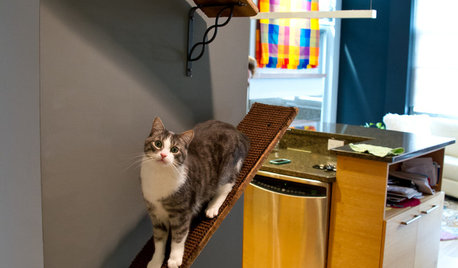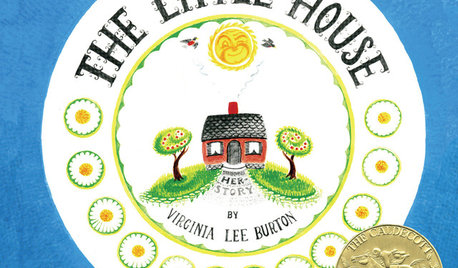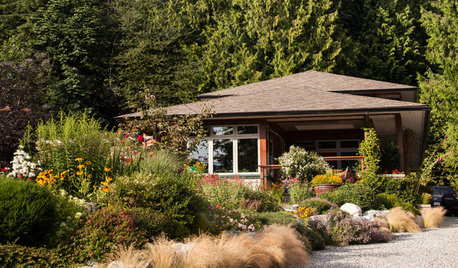Talk to me about beans- not green beans- just beanie-beans
mmqchdygg
14 years ago
Featured Answer
Sort by:Oldest
Comments (14)
farmerdilla
14 years agolast modified: 9 years agodigdirt2
14 years agolast modified: 9 years agoRelated Discussions
My bush green beans have stopped producing beans. Normal?
Comments (13)I agree with previous posts - my bush beans always put out heavy crops for a month, stop, then restart again and produce up until frost. In fact I cover them for protection from the early frosts to extend the harvest. They stopped producing earlier than usual this year due to heat stress. I am certain they will kick in again if we get a break from the heat - in fact just today I noticed new flower buds are developing. Keep watering them as needed while they are dormant if you are not getting any rain. I am currently harvesting my pole beans, which will carry me over until the bush beans kick in production again. I feel that planting both bush and pole beans is the best strategy for this very reason, if a person has the gardening space. Planting successive crops never really works that well for me because the same heat that shuts down production of the established bush beans also stresses the younger bush bean plants, causing them to stunt and produce mediocre quality beans. But it is always good to try different methods to judge for yourself....See MoreGreen Beans--Blossoms, but no beans?????????
Comments (26)I have been growing pole beans for 30 years (10 in California & 20 in Missouri) and this is the first year that I have beautiful plants, lots of flowers and no beans. It was very hot (over 99) for over 15 days, but I've seen hot weather before and still got beans. The plants get regular water (from sprinklers) daily. the weather is back to normal and I am waiting patiently or results. I think maybe the seed (gurney's) is sterile. You just don't know with commercial seed anymore and their genetic engereening. i try to watch this and avoid buying GES. Beans for me usually come in in August with slow start in Late july, here it is middle of Aug and NO sign of even starting to produce. /is anyone else having the same results this summer?...See MoreNEW: November's Beans, beans, beans swap
Comments (71)Mermaidinthegarden said: "Ooh, I would like to join this one too! I don't have very many varieties yet, but beans are what got me started on heirlooms." and "I was so excited to see the bubble envelope in the mail today, but .... nothing left inside but my list. :-(" Now that there is a damn shame, as they say. I would be more than happy to share some of my bounty from this swap. Mchill320 did an awesome job, and it will be years before I could grow them all. If interested, send me your mailing info (and your wish list, if you want) and I'll see what I can do. Rick This post was edited by rdback on Mon, Jan 13, 14 at 15:57...See MoreBeans, beans, and beans....a happy dance
Comments (7)Good to see. My first planting of Fortex was drowned by heavy rains shortly after planting, and the low ends of the rows rotted in the ground. I'll be replanting the dead spots tomorrow... still plenty of time for a full crop. The survivors from the first planting will be let go for seed....See Morevegnewsday
14 years agolast modified: 9 years agommqchdygg
14 years agolast modified: 9 years agoBeeone
14 years agolast modified: 9 years agodiggity_ma
14 years agolast modified: 9 years agovegnewsday
14 years agolast modified: 9 years agozeedman Zone 5 Wisconsin
14 years agolast modified: 9 years agovegnewsday
14 years agolast modified: 9 years agommqchdygg
14 years agolast modified: 9 years agozeedman Zone 5 Wisconsin
14 years agolast modified: 9 years agoMacmex
14 years agolast modified: 9 years agojimster
14 years agolast modified: 9 years ago
Related Stories

DECORATING GUIDESBean There, Done That: Coffee Table Alternatives
Get creative with these ideas for salvaged and DIY pieces that will get people talking
Full Story
SUMMER FRUITS AND VEGETABLESSummer Crops: How to Grow Beans
Grow your own beans for amazing variety and healthy, convenient produce all summer
Full Story
GARDENING GUIDES10 Easy Edibles for First-Time Gardeners
Focus on these beginner-friendly vegetables, herbs, beans and salad greens to start a home farm with little fuss
Full Story
DECORATING GUIDESFrom Queasy Colors to Killer Tables: Your Worst Decorating Mistakes
Houzzers spill the beans about buying blunders, painting problems and DIY disasters
Full Story
PETSUpload of the Day: Catwalks Keep Pets Happy in a Candy-Colored Condo
Shelves and wall-mounted boxes keep 2 cats active and entertained while their guardian is at work making jelly beans
Full Story
HEALTHY HOMEWhat You Need to Know About Dust and How to Fight It
Breathe easier with these 10 tips for busting mites, dander and other microscopic undesirables
Full Story
HOME TECHWhat Chipotle and Radiohead Can Teach Us About Sound Quality at Home
Contemporary designs filled with glass and concrete can be hostile environments for great sound quality. Here's how to fix that
Full Story
BOOKS11 Great Children’s Books About Home (and 2 Honorable Mentions)
Homes come in many different shapes and sizes, and these kids’ books highlight the tallest, the smallest, the oldest and the silliest
Full Story
ACCESSORIESEasy Green: Cut Electricity Use With 15 Unplugged Home Devices
Crank up the energy savings, courtesy of household items that come into power the old-fashioned way: manually
Full Story
HOUZZ TOURSMy Houzz: Green Home Tucked in a Canadian Forest
Thoughtful craftsmanship and sustainability plus an exuberant edible garden make this bright home just right for a retiring couple
Full Story


zeedman Zone 5 Wisconsin